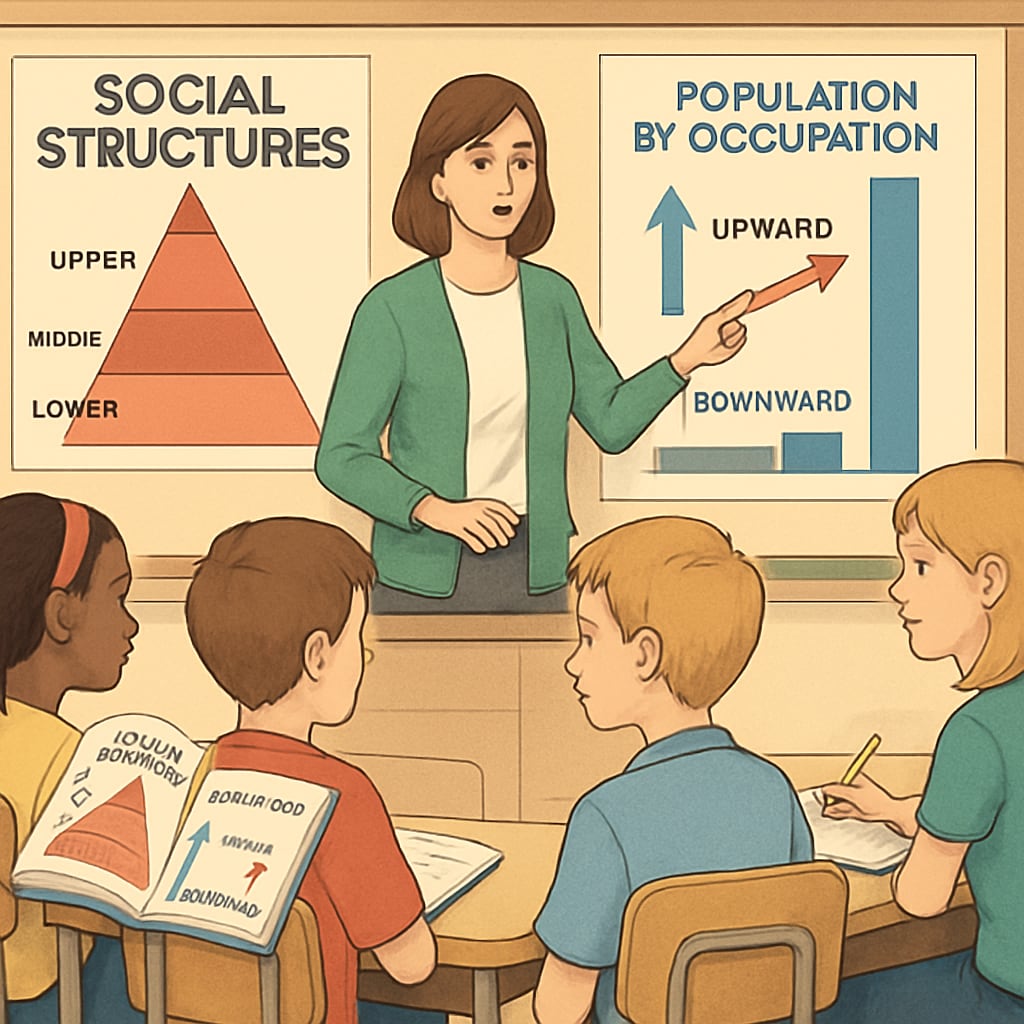In recent years, the concepts of class systems, social mobility, and rigid beliefs have sparked significant debate, particularly when these ideas are misrepresented in school curriculums. One recent example involved a sixth-grade social studies lesson that mistakenly conveyed the notion that social class is “unchangeable” throughout a person’s lifetime. This incident not only raised concerns among parents and educators but also highlighted the potential harm of teaching overly rigid views on societal structures to impressionable students.
Why Misrepresentation in Education Matters
Education plays a critical role in shaping young minds, providing them with the tools to understand and navigate the world around them. When schools inaccurately present concepts like the class system, they risk fostering a sense of hopelessness among students, particularly those from disadvantaged backgrounds. For example, teaching that social class is “unchangeable” undermines the core idea of social mobility—the ability for individuals to improve their socio-economic standing through hard work, education, or other opportunities.

As sociological research has shown, while systemic barriers do exist, they are not insurmountable. Numerous historical and contemporary examples demonstrate how individuals and communities have overcome challenges to ascend socio-economic ladders. Introducing students to these stories can inspire hope and a proactive mindset. However, when educators simplify or distort these ideas, they inadvertently impose limitations on student aspirations.
Understanding Social Class and Mobility
To accurately teach social class and mobility, educators must adopt a balanced approach. Social class refers to divisions within society often based on factors such as income, education, and occupation. Social mobility, on the other hand, describes the ability of individuals or groups to move between these divisions. According to studies from institutions such as the Wikipedia article on social mobility, upward mobility is influenced by various elements, including access to education, economic opportunities, and societal systems.

For educators, the challenge lies in presenting this information in a way that is both truthful and empowering. For example, while acknowledging systemic barriers, it is equally important to emphasize pathways to overcome these obstacles, such as scholarships, mentorship programs, and vocational training. The goal should be to instill both a realistic understanding of social structures and a belief in personal agency.
Long-Term Effects of Stagnant Beliefs
Teaching rigid or inaccurate beliefs about social class can have long-term consequences for students. When young people internalize the idea that their socio-economic status is unchangeable, they may disengage from school, lose motivation, or fail to explore opportunities that could improve their future. According to research published in Britannica’s article on social class, fostering a growth mindset in students is essential for combating such stagnation.
By contrast, education that emphasizes resilience, adaptability, and opportunity equips students to face challenges with confidence. For example, incorporating success stories of individuals who have risen above their circumstances can help students visualize their own potential. Additionally, discussions around systemic reforms, such as policies aimed at reducing inequality, can encourage critical thinking and civic engagement.
Moving Toward a Balanced Curriculum
To prevent the dissemination of inaccurate or overly rigid ideas, schools must prioritize training educators in sociology and related disciplines. Professional development programs can help teachers better understand the complexities of class systems and social mobility, ensuring these concepts are taught accurately. Furthermore, curriculum designers should collaborate with sociologists and policymakers to create materials that reflect both the challenges and possibilities within societal structures.
Parents also play a pivotal role in this process. By engaging in conversations with their children about what they learn in school, parents can help clarify misconceptions and provide additional context. Encouraging critical thinking at home ensures students are equipped to question and analyze the information they receive.
Conclusion: Social mobility is a nuanced and multi-faceted concept that should be taught with care. When schools misrepresent ideas about class systems, they risk limiting students’ potential and reinforcing harmful stereotypes. By fostering a balanced and empowering approach to social studies education, educators can inspire students to envision a future full of possibilities, regardless of their starting point.


